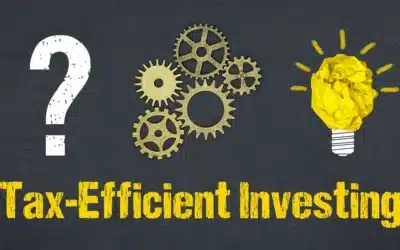Blog
Financial Tips
We believe that knowledge is the key to making informed decisions about your financial future. Our blog is designed to provide you with a wealth of valuable insights, tips, and strategies on everything from financial planning and wealth management to taxes, estate planning, Social Security, and more.
Whether you’re preparing for retirement, navigating complex tax laws, or looking for ways to preserve your legacy, our blog serves as an invaluable resource. Each post is crafted by our team of financial professionals, ensuring you receive relevant, up-to-date information that addresses the real challenges retirees and pre-retirees face today.
How to Use Diversified Investments to Build a Balanced Retirement Income Plan
Well-diversified retirement income strategies aren’t just for the ultrawealthy. Retirement savers and retirees with modest portfolios can incorporate a mix of investments to balance growth, stability, and dependable passive income sources. Stocks Income from stocks...
Developing a Strategy for Long-Term Retirement Income
Retirement planning isn’t just about saving—it’s about ensuring those savings last. A sustainable retirement income plan helps ensure financial security by balancing predictable income sources, strategic withdrawals, and long-term risk management. Without a strategy...
Managing Withdrawals During Market Downturns
While no one likes to see the value of their 401(k) or IRA decrease, market downturns are far more worrying for current retirees than workers. Those nearing retirement can take comfort in knowing they may be able to defer their Required Minimum Distributions (RMDs) a...
Investment Strategies for Women
Women face unique retirement planning and investment challenges, including longer lifespans and potential income gaps from career breaks or lower lifetime earnings. Although everyone can benefit from strong investment strategies, women have a particular interest in...
Unique Challenges Women Face in Retirement
Women face distinct challenges in retirement. Longer lifespans, lower lifetime earnings, and higher healthcare costs can create financial hurdles that require careful preparation. Single women, couples, and widows should keep these unique challenges in mind when...
General Tax-Saving Moves for Retirement Savers Before the Tax Deadline
The tax deadline is quickly approaching, but retirees and retirement savers still have time to take advantage of deductions and tax-saving opportunities. Whether you’re looking to reduce taxable income, maximize savings, or avoid penalties, here are some last-minute...
Tax-Efficient Withdrawal Strategies for Retirement Income
Strategic withdrawals may help minimize your tax burden, preserve retirement savings, and maintain steady, dependable income throughout your golden years. Developing a strategy to maximize income while minimizing tax burden is one of the more complex aspects of...
The Tax Deductions and Credits Available to Retirees in Arizona
The U.S. and Arizona tax codes are extraordinarily complex, with hundreds of potential deductions and credits available to taxpayers. Which strategies will be most impactful varies significantly depending on where you are in life, your income, and your expenses....
Preparing Required Documents for Filing Taxes and Avoiding Common Mistakes
Preparing Required Documents for Filing Taxes and Avoiding Common Mistakes Filing your taxes can be overwhelming, especially when your income comes from a combination of sources such as annuities, retirement savings accounts, pensions, or other assets. Maximizing the...
Setting Meaningful Financial Resolutions for the New Year
New Year’s resolutions don’t have to focus solely on physical health and wellness. Gaining a better handle on your current financial situation and charting a path to a sustainable retirement lifestyle can be an equally meaningful resolution for the new...
Reviewing Retirement Income Plans and Budgeting Strategies
Performing periodic reviews of retirement income plans and budgeting strategies is beneficial for most retirees and savers nearing retirement. Whether you’re preparing to retire or are already living on your retirement savings, the start of a new year may provide an...
Updating Your Investment Portfolio to Align with Retirement Goals
Whether you’re a current retiree or a saver nearing retirement age, the beginning of a new year may present the ideal opportunity to analyze your portfolio positions and rebalance them for your current risk tolerance and time horizons. As you approach or navigate...
Begin the Conversation
We’re here to listen, understand, and help you take control of your financial future.












